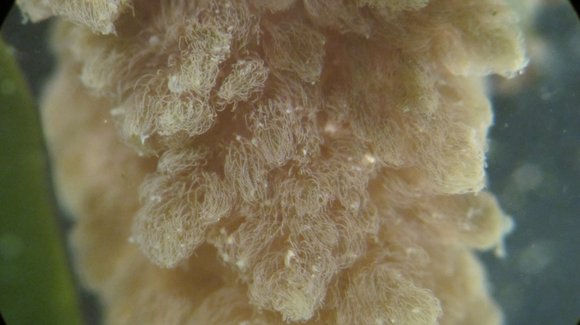
The red algae species Asparagopsis taxiformis is able to reduce the volume of methane emissions in cattle by a good 70%.
100 times stronger
Cows and sheep produce large volumes of methane (CH4) when they digest plant feed. Methanogens, part of the domain of archaea (single-celled micro-organisms) are responsible for the production of methane. As a greenhouse gas, methane is 100 times stronger than CO2 and is a major contributing factor to climate change. Each day, a cow produces approximately 500 litres of methane gas, which equates to 175 kilograms of methane per year. Around 90% of this methane gas leaves via eructation, while the rest is expelled through flatulence. Our livestock produces 44% of all methane emissions caused by humans. This is the equivalent of 3.1 gigatonnes.
2% dried red algae
Researchers at CSIRO and James Cook University in Queensland, Australia, sought to find a way to reduce the amount of methane in expelled gas from cows. At the end of 2015, their work led them to a species of red algae called Asparagopsis taxiformis. This seaweed – considered to be a delicacy in Hawaii – produces bromoform (CHBr3). This is a solvent that inhibits methane production by reacting with vitamin B12.
In the laboratory, the red algae cut methane production by more than 99%. This is an impressive figure in theory, but means nothing unless the same results are achieved in reality. This is why researchers conducted a practical experiment on a sheep. Over the course of 72 days, the sheep received a diet fortified with dried red algae with a content ratio of 2%. Its methane emissions fell by 50-70%.
2.17 gigatonnes
If we were to add red algae to cattle feed around the world, we would be able to reduce methane emissions by 2.17 gigatonnes, which is the equivalent of India’s total CO2 emissions. However, despite the fact that a content ratio of just 2% is required, the livestock industry is huge – meaning that the demand for these algae would also be significant. Around 6,000 hectares of seaweed farms would be needed, for example, to provide enough algae for the 26 million cows in Australia alone. That said, red algae have another benefit: the algae absorb additional CO2 through photosynthesis while they grow, thereby further reducing greenhouse gases.
Source: Animal Production Science
